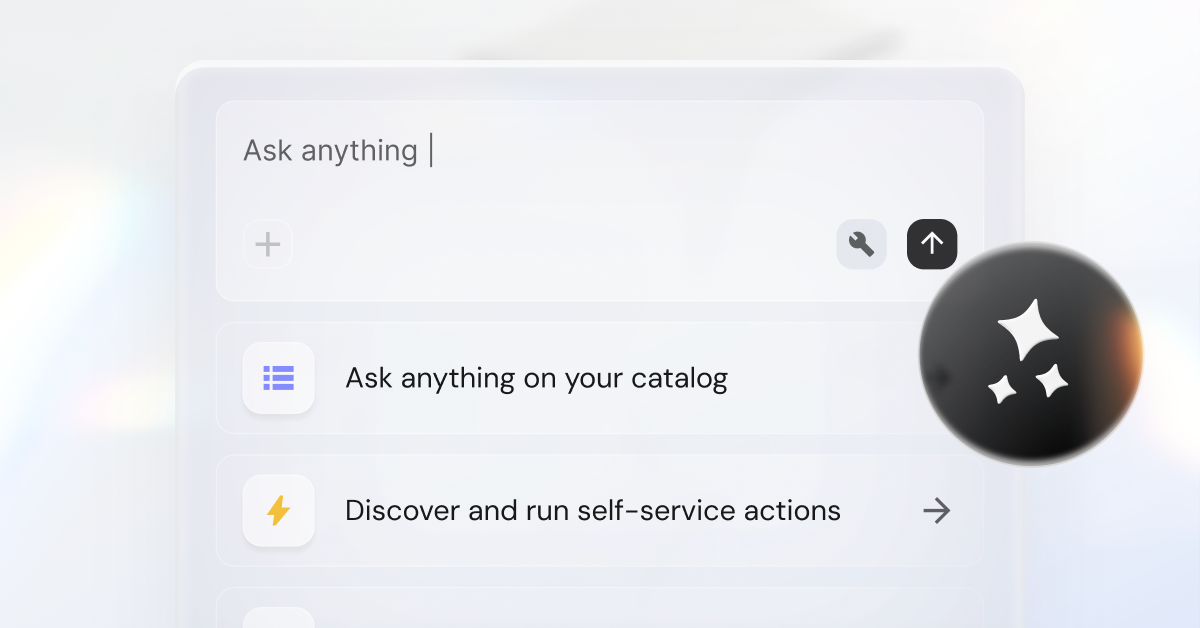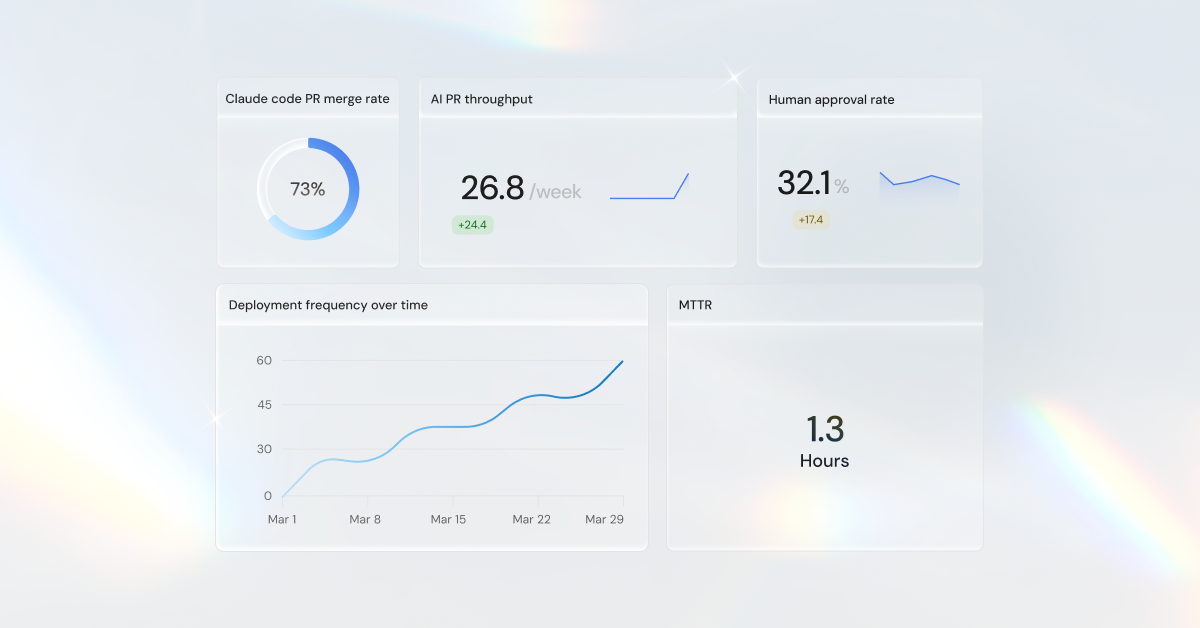Announcing the software catalog dependency graph



Introduction
The software catalog in the internal developer portal is much more than a microservices catalog. It is both services and infrastructure aware and shows all information in context. By combining information about clouds, environments, software, engineering tools as well as ownerships, docs, APIs and more, it provides the ability to really understand anything software in real time.
Here’s a table to show the types of information shown in the software catalog (imagine the dependencies and contextual information hidden in the interplay of all these elements):
{{tabel-2}}
In the real world, data is fragmented across many silos and devops tools, while devops and developers need to see the entire picture, in context. While some questions can be answered by looking at an individual entity within the software catalog (Who is on call? What version? Where’s the monitoring link? The API?), some require additional context - dependencies.
This would answer questions such as which cloud resources in the region are related to which environments and services, and what are the associated resources affected by an outage.
If the software catalog is a living inventory of anything software, cloud or in between, dependency mapping is a living map that lets you visualize dependencies in a way that is understandable to humans, and to filter what you need to see at any given time.
Microservice dependency examples
The software catalog sees it all - cloud resources, versions, kubernetes namespaces, on-call resources and more.
But sometimes the human eye can’t make sense of all dependencies, and this is when a dependency graph comes in handy.
The dependency graph visualizes the dependencies between entities in the software catalog, providing perfect context when assessing risks, troubleshooting, determining priorities and understanding the environment.
Here are three examples:
The microservice dependencies point of view
In this example we can see a specific service, all its versions, which environment they are deployed on, the associated k8s namespaces and the multiple clouds where these entities exist.
.png)
The devops point of view for microservice dependencies
In this example you can see a K8s cluster with all of its relations - the specific region in AWS, the namespaces inside the cluster in the running pods in each namespace. This graph gives you full visibility on the structure of the cluster

The developer point of view of microservices dependencies
In this example, we can see that the "cart" service is related to another service, a kafka topic and a database (combination of software and resource dependencies). And we also can see the resource dependencies of the related service (the "order" service). This will help the developer who is trying to determine issues related to a service.
.png)
The NOC or Security point of view for Software dependencies
Dependency graphs also play a role when security issues or audits are required, as in the log4j vulnerability. In this case, graphs make it easy to determine where dependent packages or other issues exist. This can also be done through searches or queries in port. (linK). This capability answers questions across clouds, accounts, microservices, deployments and versions.

Get your survey template today
Download your survey template today
Free Roadmap planner for Platform Engineering teams
Set Clear Goals for Your Portal
Define Features and Milestones
Stay Aligned and Keep Moving Forward
Create your Roadmap
Free RFP template for Internal Developer Portal
Creating an RFP for an internal developer portal doesn’t have to be complex. Our template gives you a streamlined path to start strong and ensure you’re covering all the key details.
Get the RFP template
Leverage AI to generate optimized JQ commands
test them in real-time, and refine your approach instantly. This powerful tool lets you experiment, troubleshoot, and fine-tune your queries—taking your development workflow to the next level.
Explore now
Check out Port's pre-populated demo and see what it's all about.
No email required
.png)
Check out the 2025 State of Internal Developer Portals report
No email required
Minimize engineering chaos. Port serves as one central platform for all your needs.
Act on every part of your SDLC in Port.
Your team needs the right info at the right time. With Port's software catalog, they'll have it.
Learn more about Port's agentic engineering platform
Read the launch blog
Contact sales for a technical walkthrough of Port
Every team is different. Port lets you design a developer experience that truly fits your org.
As your org grows, so does complexity. Port scales your catalog, orchestration, and workflows seamlessly.

Book a demo right now to check out Port's developer portal yourself

Apply to join the Beta for Port's new Backstage plugin
Further reading:

Learn more about Port’s Backstage plugin















.png)


